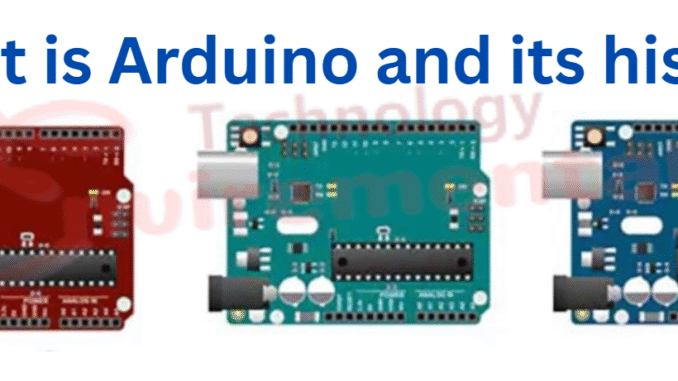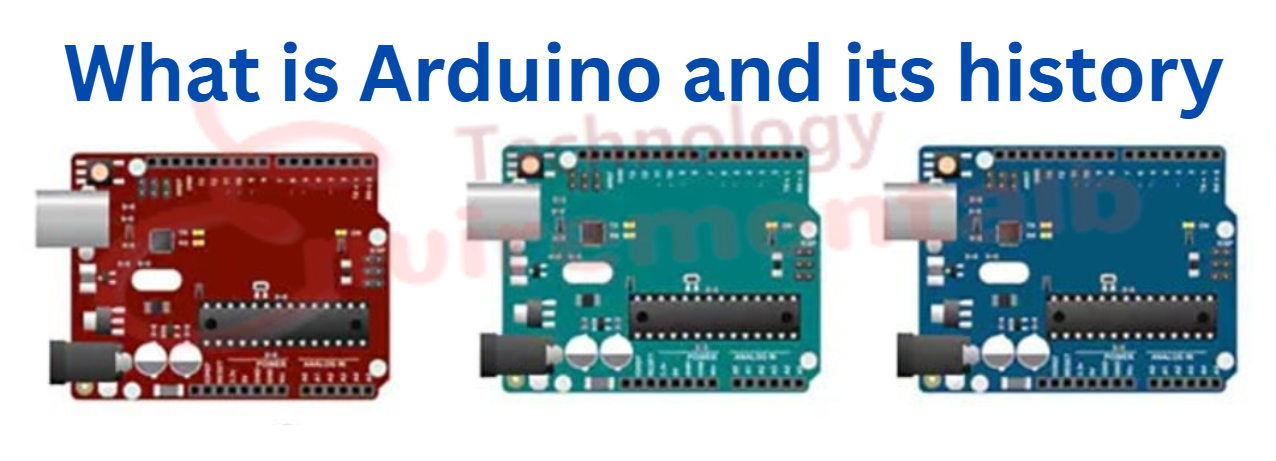
This article will explain the basic introduction to Arduino. Arduino is an open-source electronics platform that consists of hardware and software. It was created by Massimo Banzi and David Cuartielles in 2005. Arduino can be used in a variety of ways by designers, artists, hobbyists, and electronics students to create almost all types of electronics circuits and projects. It is a small microcontroller-based device that can read inputs by using light, temperature, and button presses and convert them into outputs in LEDs, activating a motor, sending a signal, or driving any other electronic circuit.
Arduino boards or devices are programmable using the Arduino Integrated Development Environment (IDE), which supports a simplified version of C/C++. The platform includes a range of boards like the Arduino Uno, Nano, Mega, and more, each suited for different project needs. Because of its open-source nature, Arduino has built a large, supportive community that continuously shares projects, libraries, and code.
Today in modern electronics Arduino is widely used in robotics, home automation, wearable tech, and educational tools. Its simplicity and flexibility make it ideal for beginners, yet it is powerful enough for advanced users to prototype and build complex systems.
History of Arduino
2003–2004: The Birth of the Idea
- The roots of Arduino trace back to the Interaction Design Institute Ivrea in Ivrea, Italy.
- Students were using the BASIC Stamp microcontroller (from Parallax Inc.).
- Hernando Barragán, a student, created Wiring as his master’s thesis—a prototype development platform with a custom board and a simplified programming environment.
2005: Arduino Is Born
- Building upon Wiring, a group of developers including Massimo Banzi, David Cuartielles, Tom Igoe, Gianluca Martino, and David Mellis created Arduino.
- Their goal: A low-cost, easy-to-use development board for students.
- The first Arduino board was based on the ATmega8 microcontroller, and it cost less than $30—a game-changer.
2006–2010: Rise of the Maker Movement
- Arduino gained popularity in the DIY and maker communities.
- It became synonymous with prototyping and learning electronics.
- Variants like Arduino Diecimila and Arduino Duemilanove emerged.
2011–2015: Global Expansion
- Arduino evolved rapidly with versions like the Arduino Uno, Mega, Nano, and Leonardo.
- A naming and trademark dispute emerged between the Arduino founders, leading to two versions of the company: Arduino LLC and Arduino SRL.
2017: The Split Resolved
- The conflict ended, and the two groups reunited under Arduino AG.
- They launched Arduino Create, a cloud platform for programming and managing boards online.
2018–Present: Professional and IoT Focus
- Arduino expanded into the IoT and industrial markets with boards like Arduino MKR and Portenta.
- It now offers a full ecosystem, including cloud services, AI integration, and enterprise-level hardware and software tools.

